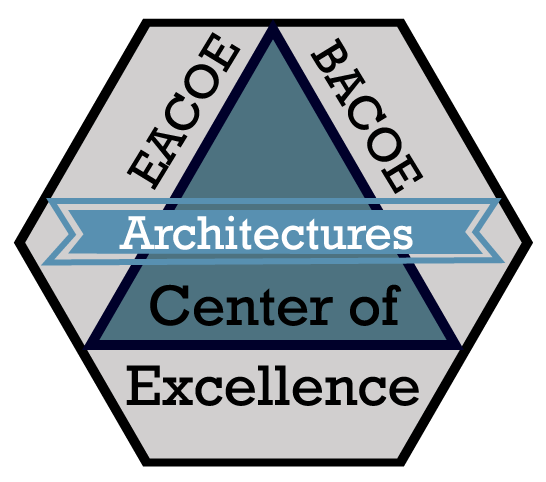The Architect Roles in an Enterprise (Full Description)
Enterprise Architect, Business Architect, Data Architect, Service-Oriented Architect, Cloud Architect, Information Architect, Technology Architect – etc. OH MY!! How many more architects in an enterprise can you label? Google has 11,400,000 entries for the term “enterprise architect” alone.
Perhaps the “correct” definition is entry number 8,457,394 – just kidding, of course. Not much help? Perhaps you look for a definition on the first page of your favorite “search engine.” Perhaps experiencing “confirmation bias.” Let us get through this madness and bring some method into play.
The Enterprise Architecture Center Of Excellence (EACOE), through our thousands of Architecture client engagement experiences, identified and defined twelve Architecture Modeling Roles in an Enterprise.
These Architecture Modeling Roles are:
• Mutually exclusive – providing clear role responsibility, and
• Complete, no loose ends or unassigned gray areas to be overlooked or to be a source of concern.
Organizations can use the Architecture Modeling Roles in conjunction with
• The Enterprise Framework TM to provide a frame of reference, and
• The Enterprise Framework Practitioner’s Guide – available to EACOE Certified Enterprise Architects - to provide guidance for each Architecture Modeling Role.
For each Architect Role, the EACOE defines the Architecture Role Support Elements an organization will need to begin successfully modeling their Enterprise Architecture. This guidance includes
• Role responsibilities and common Architecture Role interactions,
• Architecture element naming standards,
• Graphical notations that are “human consumable” and
• Definition Templates for complete, non-redundant deliverables.
This webinar will provide an overview of this important and unprecedented work, professionalizing and providing a consistent understanding of these vital skills an enterprise and its architects need.
Categories
- Agility
- Architecture Models
- Architecture Views
- Artificial Intelligence
- Assemble to Order
- BTP
- Benefits
- Big Data
- Bill of Materials
- Book
- Business Architect
- Business Architecture
- Business Architecture Framework
- Business Architecture Participants
- Business Architecture Tools
- Business Capability
- Capabilities
- Capability Ability
- Certification
- Certification Levels
- Certification Mistakes
- Change Management
- Checklist
- Cloud
- Cloud Decommission
- Coding
- Communication
- Competition
- Complexity
- Confirmation Bias
- Consulting
- Cybersecurity
- Data
- Data Architecture
- Data Lake
- Data Modeling
- Data Sludge
- Data Swamp
- Differentiators
- Digital Transformation
- Distance Learning
- Enterprise Architect
- Enterprise Architecture
- Enterprise Architecture Framework
- Enterprise Architecture Participants
- Enterprise Architecture Tools
- Evaluation Checklist
- Evaluation Criteria
- Event Model
- Experiences needed

